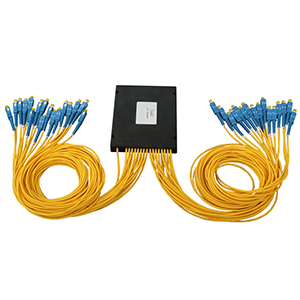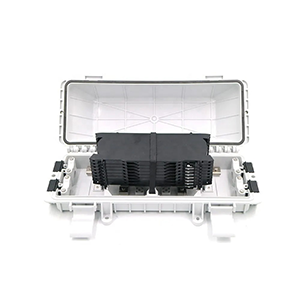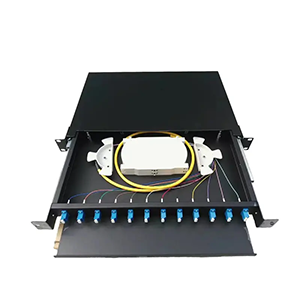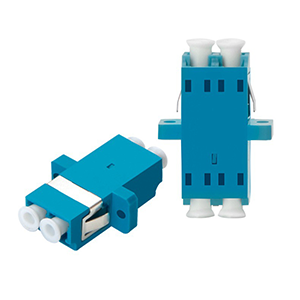As a key component in high-speed data transmission, QSFP cables play an important role between data centers, network equipment and servers. Let us have an in-depth understanding of the overview, types, application scenarios, advantages and connector types of QSFP cables, and provide you with purchase and use suggestions to help you understand and experience this excellent product.
Overview of qsfp cable
QSFP (Quad Small Form-factor Pluggable) cable is a fiber optic or copper cable interface for high-speed data transmission, used to connect high-speed connections between data centers, network equipment and servers. It is a small, high-density pluggable interface that provides multiple channels for transmitting data simultaneously.
The function of QSFP cable is to transmit high-speed data signals through fiber optic or copper cables. It features high bandwidth, low latency and high reliability, and can meet the needs of modern data centers and network equipment for high-speed data transmission.
In high-speed data transmission, QSFP cables play an important role. It can support a variety of high-speed protocols and applications, such as Ethernet, Fiber Channel, InfiniBand, etc., and can achieve high-speed data transmission rates, such as 40Gbps, 100Gbps, or even higher. QSFP cables can meet the needs of large-capacity data transmission and support fast data transmission and real-time applications, such as large-scale data centers, cloud computing, high-performance computing and other fields.
QSFP cables play a key role in high-speed connections between data centers, network equipment and servers. It allows for fast and reliable transfer of large amounts of data and supports high-density device connections, thereby increasing data center throughput and performance. The small size and high-density design of QSFP cables allow more devices to be connected in a limited space, providing more bandwidth and throughput.
Types and specifications of qsfp cable
QSFP cables come in many types and specifications, here are some common types:
-
QSFP+ (Quad Small Form-factor Pluggable Plus): QSFP+ is a QSFP cable that supports a maximum transmission rate of 40Gbps. It typically uses fiber optic or copper cable connections and supports protocols such as Ethernet, Fiber Channel, and InfiniBand. QSFP+ cables are widely used in data centers, high-performance computing and network equipment.
-
QSFP28 (Quad Small Form-factor Pluggable 28): QSFP28 is a QSFP cable that supports a maximum transmission rate of 100Gbps. It can be connected using fiber optic or copper cables and supports protocols such as Ethernet, Fiber Channel, InfiniBand and more. QSFP28 cables are widely used in applications with high bandwidth requirements, such as data centers, cloud computing, and hyperscale networks.
Different QSFP cable specifications have different characteristics such as bandwidth, distance and supported protocols. Here are the features of some common specifications:
QSFP+:
- Bandwidth: up to 40Gbps.
- Distance: Fiber optic connections typically support distances of tens to hundreds of meters, and copper connections typically support shorter distances.
-Supported protocols: Supports Ethernet, Fiber Channel, InfiniBand and other protocols.
QSFP28:
- Bandwidth: up to 100Gbps.
- Distance: Fiber optic connections typically support distances of tens to hundreds of meters, and copper connections typically support shorter distances.
-Supported protocols: Supports Ethernet, Fiber Channel, InfiniBand and other protocols.
Note that specific bandwidth and distance may vary depending on the specific QSFP cable manufacturer and product. Therefore, when selecting QSFP cables, you should consider selecting appropriate specifications based on actual needs and device compatibility.
Application scenarios of qsfp cable
QSFP cables are widely used in many fields. Here are some common application scenarios:
-
Data center interconnection: Servers, storage devices and network equipment in data centers require high-speed and reliable interconnection. QSFP cables can be used to connect between servers and between servers and switches to meet large-capacity data transmission needs within the data center. It provides high-bandwidth, low-latency connectivity, supporting fast data transfer and real-time applications.
-
Network switch: In network switches, QSFP cables are used to achieve high-speed upstream and downstream connections. It can connect between switches, or between switches and routers, providing high-bandwidth data transmission capabilities. The small size and high-density design of QSFP cables enable more port connections in the switch, improving network throughput and performance.
-
Server interconnection: In large-scale server clusters, QSFP cables are used for interconnection between servers. It can achieve high-speed, reliable data transmission and support large-scale data processing and parallel computing. The high-bandwidth characteristics of QSFP cables allow servers to quickly share data and resources, improving overall computing power and efficiency.
The following is a practical example of how QSFP cables provide high-speed, reliable data transmission solutions:
In a large data center, there are hundreds of servers that require high-speed interconnection to support large-scale data processing and cloud computing applications. In order to meet the high bandwidth requirements, QSFP cables are used as the connection method between servers. Each server is equipped with a QSFP+ or QSFP28 interface and is connected to a switch or router via optical fiber or copper cable. These QSFP cables provide high-speed data transmission capabilities and support Ethernet protocols, enabling fast and reliable data exchange and sharing. The result of using QSFP cables is that servers inside the data center can quickly access and process large amounts of data, improving computing efficiency and data processing capabilities.
This case demonstrates the application of QSFP cables in data center interconnection, supporting the needs of large-scale data processing and cloud computing applications by providing high-speed, reliable data transmission solutions.
Advantages and features of qsfp cable
QSFP cables have multiple advantages and features, here are some of the main ones:
Advantage:
-
High bandwidth: QSFP cable provides high-bandwidth data transmission capabilities and can support 40Gbps, 100Gbps or even higher transmission rates. This makes it suitable for applications such as large-capacity data transfer and high-performance computing.
-
Low latency: QSFP cable has low transmission latency, enabling fast data transmission and real-time applications. It provides fast response and efficient data processing capabilities.
-
Multi-protocol support: QSFP cable can support multiple protocols, such as Ethernet, Fiber Channel, InfiniBand, etc. This makes it flexible and versatile in different application scenarios.
Features:
-
Miniaturized packaging: QSFP cable adopts miniaturized packaging, allowing it to connect more devices in a limited space. This is important for high-density device connections and compact rack layouts.
-
Hot-swappable function: QSFP cable has hot-swappable function, which can be inserted or unplugged during operation without shutting down the system or interrupting data transmission. This improves system maintainability and reliability.
-
High-density connection: Due to the small size and high-density design of QSFP cable, more device connections can be achieved in a limited space. This is important for improving data center throughput and performance.
-
Flexibility: QSFP cables provide a variety of connection options and can be connected using fiber optic or copper cables to adapt to different needs and environments.
Connector type of qsfp cable
Common connector types for QSFP cables include LC and MPO. The following is an introduction to these two connector types and their applicable scenarios, advantages and disadvantages:
LC connector:
- Description: LC connector is a miniaturized optical fiber connector, usually used for the connection of single-mode optical fiber or multi-mode optical fiber. It uses a 1.25mm ceramic ferrule and supports single-fiber two-way communication.
- Applicable scenarios: LC connectors are suitable for application scenarios that require high-density connections and smaller sizes, such as interconnection between data centers, network equipment and servers.
- Advantages: LC connector has small size, low insertion loss and high reliability. It can provide higher bandwidth and smaller connection space requirements.
MPO connector:
- Description: MPO connector is a multi-mode optical fiber connector, usually used for high-density optical fiber connections. It uses multiple optical fiber ferrules (usually 12 or 24) to support multi-fiber bidirectional communication.
- Applicable scenarios: MPO connectors are suitable for application scenarios that require high-density optical fiber connections, such as high-speed networks in data centers, fiber channels and ultra-large-scale networks.
- Advantages: MPO connectors feature high-density connections, quick installation and easy management. It can provide high-bandwidth data transmission and rapid deployment.
These two connector types have their own advantages and disadvantages in different application scenarios. Choosing the appropriate connector type depends on your specific needs and environment:
- If you need miniaturization and smaller connection space requirements, as well as the connection of single-mode fiber or multi-mode fiber, you can choose LC connectors.
- If you need high-density fiber optic connections and larger bandwidth requirements, as well as multi-mode fiber connections, you can choose MPO connectors.
It should be noted that the selection of connectors should also consider the compatibility and standardization requirements of the equipment. In practical applications, LC to MPO adapter cables or modules are sometimes used to achieve interconnection between different connector types.
Suggestions on purchasing and using qsfp cable
When purchasing QSFP cables, here are some suggestions and best practices:
Factors to consider:
- Bandwidth requirements: Determine the required transmission rate (such as 40Gbps, 100Gbps, etc.) and bandwidth requirements.
- Distance requirements: Determine the required connection distance to select the appropriate QSFP cable type (such as QSFP+, QSFP28, etc.).
- Compatibility: Make sure the QSFP cable you choose is compatible with the device’s interface type and protocol. Check the device’s technical specifications and compatibility list.
Brand selection:
- Choose reputable, proven brands and suppliers to ensure reliable product quality and performance.
- Read reviews and feedback from other users to understand a brand’s reputation and customer satisfaction.
Usage suggestions:
- Correct wiring: Correct wiring and installation according to the specifications and requirements of the QSFP cable. Follow relevant installation guidelines and best practices to ensure proper cable operation.
- Connector Protection: Ensure QSFP cable connectors are protected from physical damage or falling off. Use connector protective sleeves or other protective measures to ensure reliable and stable connections.
- Troubleshooting: If connection or transmission issues occur, first check whether the physical connection of the QSFP cable is secure. You can try to replug and unplug the cable, check whether the connector is clean, and eliminate other possible causes of the failure.
- Regular inspection and maintenance: Regularly check the status of QSFP cables and connectors to ensure they are clean and functioning properly. Clean and maintain as needed to maintain good performance and reliability.
Summarize:
As a key component of high-speed data transmission solutions, QSFP cables play an important role in high-speed connections between data centers, network equipment and servers. Its high bandwidth, low latency, and multi-protocol support make it ideal for building high-performance networking and storage solutions.
Whether you are a data center administrator or a network engineer, QSFP cables will be your right assistant in achieving high-speed, reliable data transmission. Choosing QSFP cables is a key step in building an excellent network infrastructure.
- What is QSFP cable?
- What is the diameter of a QSFP cable?
- What is the maximum length of QSFP cable?
- What is the difference between QSFP and QSFP+?
- What is the difference between SFP and QSFP cable?
- What is QSFP vs SFP?
- Can I connect QSFP to SFP?
- What does QSFP mean?
- Are SFP and QSFP compatible?
-
100G QSFP28 to 2x50G QSFP28 active branch cable
-
100G QSFP28 to 2x50G QSFP28 active branch optical cable
-
100G QSFP28 to 2x50G QSFP28 passive branch cable
-
100G QSFP28 to 4-duplex LC active branch optical cable
-
100G QSFP28 to 4x25G SFP28 active branch cable
-
100G QSFP28 to 4x25G SFP28 active branch optical cable
-
100G QSFP28 to 4x25G SFP28 passive branch cable
-
200G QSFP-DD to 2x100G QSFP28 active branch optical cable
-
200G QSFP-DD to 2x100G QSFP28 passive branch cable


